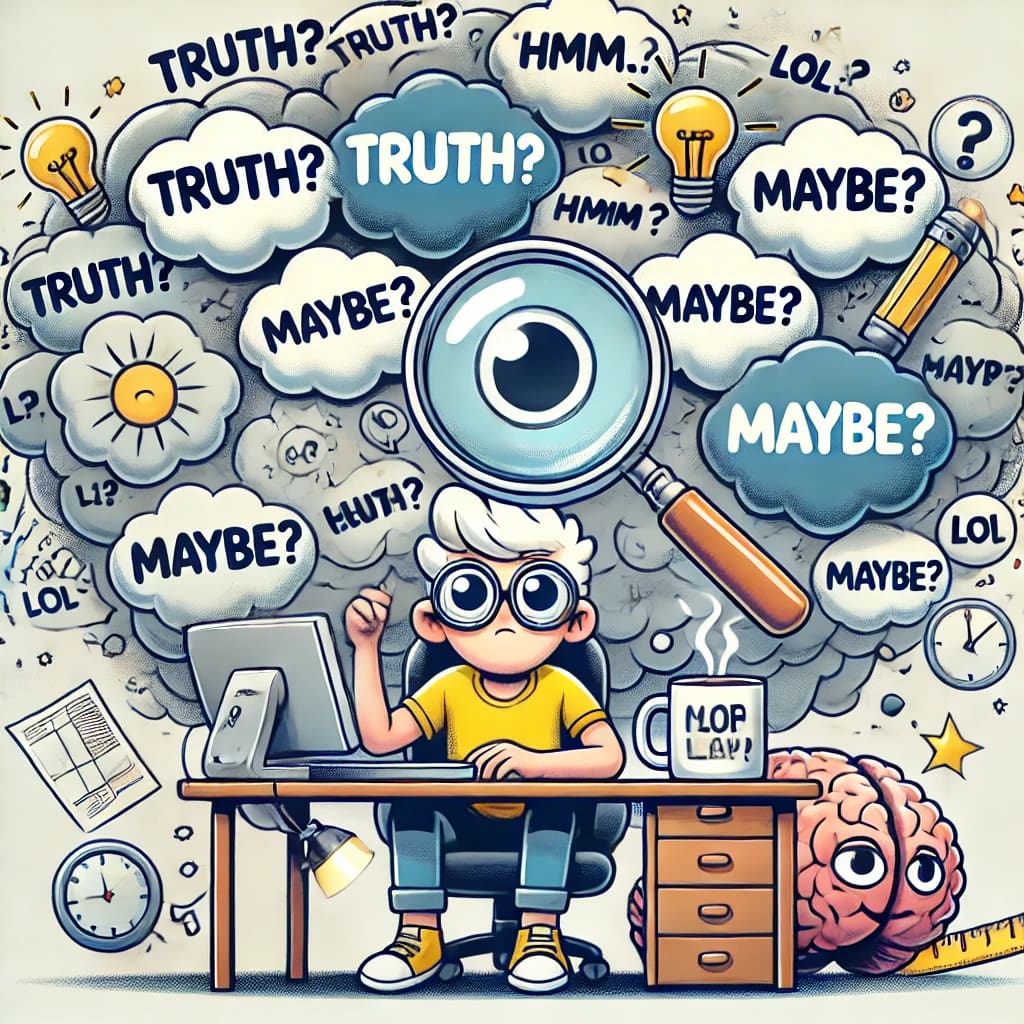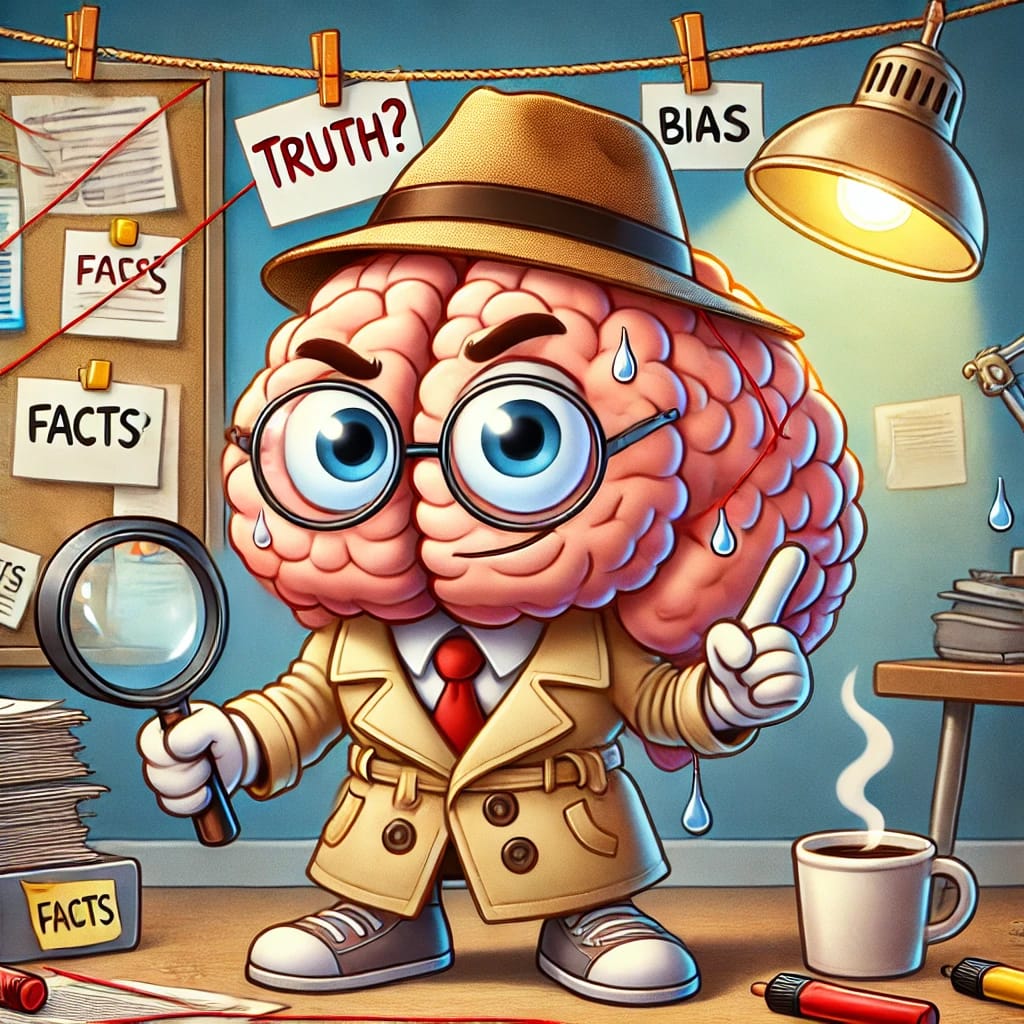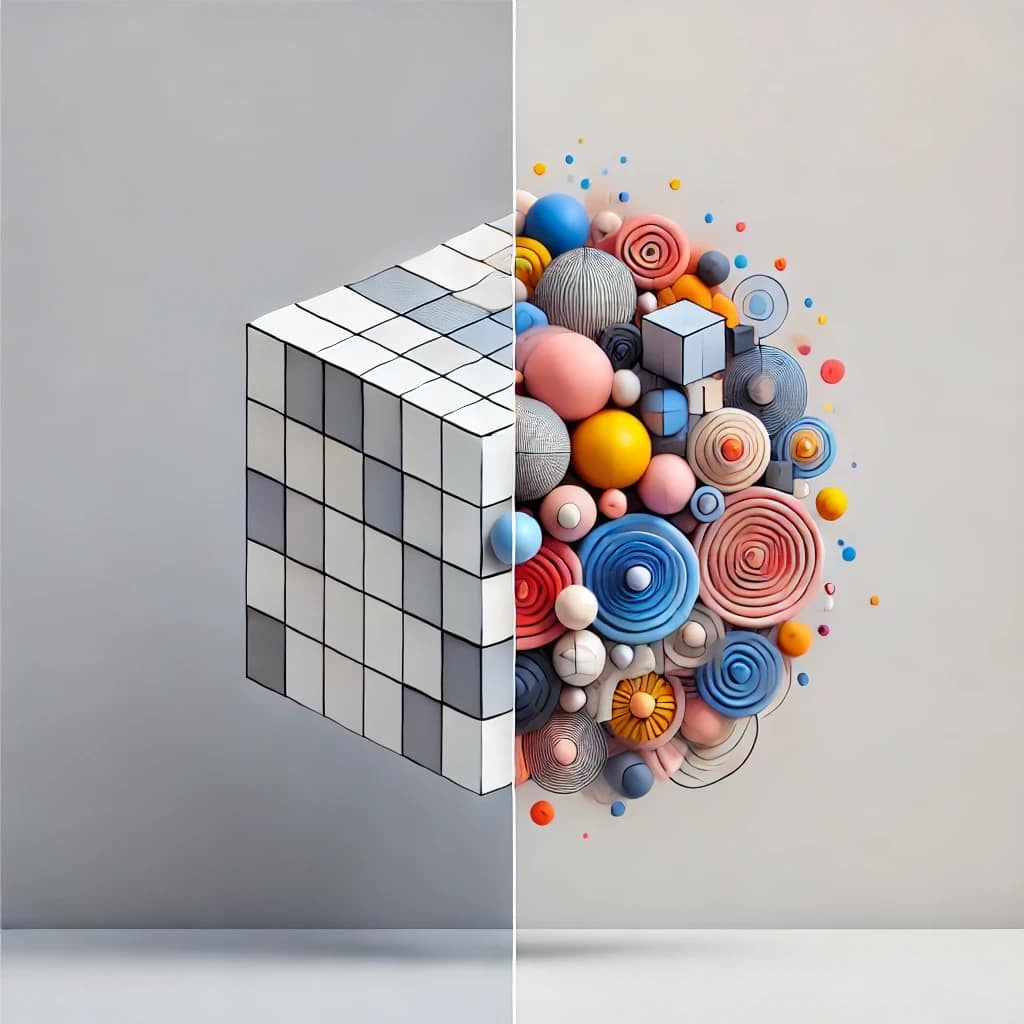By Destyn Dagle | MySideBRAIN.com · March 26, 2025
We’re All Living in a Game of Two Truths and a Lie

Everywhere I look—every headline, every feed scroll, every coffee shop conversation—I hear it.
Two truths. One lie. On loop.
And the scary part? They’re not labeled!
We’re swimming in a soup of spin, and we’re expected to sip it with a smile and somehow figure out what’s real. It’s not just media. It’s conversations. It’s marketing. It’s even our own inner monologue.

And don’t get me started on “personal truth.”
“TRUTH RAGE: Activated”
‘Personal truth’ detected. Deploying critical thinking. 😤⚠️
Truth Isn’t Trending—It’s Twisting
We used to say truth was about facts. Evidence. Reality. Now? Truth has turned into a feeling.
“This is my truth.”
Cool. But your truth might be lying to you. And that’s not judgment—it’s just how brains work.
We want to believe things that feel good. We want to agree with people who agree with us. We want to win arguments more than we want to find clarity.
So yeah, truth got twisted. Not because people are evil, but because people are emotional. And emotional people are easy to manipulate—especially by themselves.
Why This Matters (And Hurts, so much)
Lies don’t always show up waving flags. Sometimes they show up in:
- Emotional language that feels just right.
- Stories that are almost true.
- Reels and headlines that confirm your worldview—so you never think to question them.
And the biggest lie? That you already know what’s true.
When everyone thinks they’ve got the truth—and nobody stops to verify—we lose our grip. Not just on reality, but on each other.
So How Do You Find Truth in the Noise?
It starts with admitting something hard:
“I might be wrong.”
If you can say that, you’ve already broken the spell. Here’s how to go further:
🔁 Reverse the Frame
Take what you believe and flip it. Force yourself to argue the opposite. It’s uncomfortable—but powerful.
🔍 Source Check x2
Don’t stop at the first confirmation. Find a source outside your circle. If your belief can’t survive opposition, it’s not a belief—it’s a bias.
⚡ Emotional Audit
If a post makes you feel instantly angry, smug, or vindicated—pause. Strong emotion often signals manipulation, not information.
🧪 Truth Test: Would the Opposite Also Feel True?
If both sides of a claim feel equally “right,” you might be in the territory of persuasion, not proof.
🧠 The BRAIN Method: Your Internal Lie Detector
The world lies. Your brain whispers. You need a system that cuts through both.
That’s what the BRAIN Method is:

- Background 🌐 – What’s really going on? Strip away the noise.
- Request 🎯 – What’s the real ask? Who wants what, and why?
- Additional Info 📈 – What facts support—or silently contradict—this?
- Inquiry ❓ – What question isn’t being asked… but should be?
- Next Step 🚀 – What actually moves you forward—not just makes you feel right?
This isn’t just about content. It’s about clarity. When you use BRAIN, you start thinking for yourself—again.
💬 Final Thought: You’re Not Crazy—You’re Just Surrounded
It’s okay to be confused. I am—constantly.
It’s okay to not know what to believe. I don’t either, and yes—it’s DRIVING ME NUTS.
If you’re like me, you just want the truth—no spin, no fluff. I’m just trying to like my life here.
But don’t settle for surface.
Don’t call feelings “facts.”
And don’t let someone else’s certainty become your truth.

Because there’s a big difference between fact
(Fact = Something that can be objectively verified. Reality-based. Observable. Repeatable.)
…and F.A.C.T. — Factual Analysis and Creative Truth —
aka something that sounds legit, but is secretly stitched together
(yeah, I made that up).
One helps you think.
The other just helps you feel right.
🧠 Think again at MySideBRAIN
💬 What’s the lie that took you the longest to unlearn?
Drop it below. ⬇️
Very true!
A very informative and well-structured article! I appreciate how this website makes learning enjoyable and accessible.
Thank you